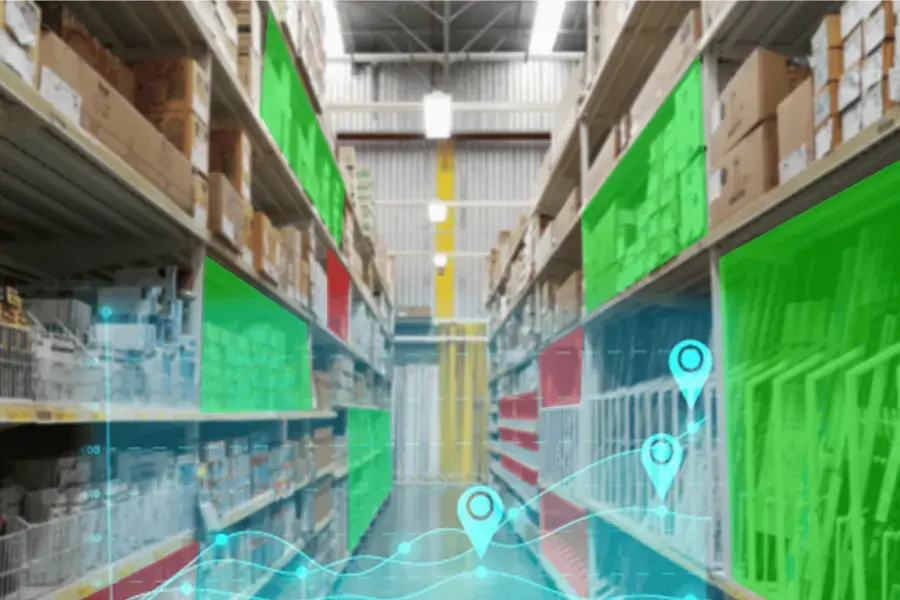Retailers are a critical part of global economies, but problems with planning or inventory management remain. In 2023, retailers formed approximately 6.4% of US gross domestic product (GDP), according to USAFacts. And that number is likely to trend upward in the coming months. With the rise of AI-powered search and hyper-personalized digital experiences via Google AI Mode, retail is once more evolving. Retailers–often caught in the crosshairs of supply and demand–must retool their planning and inventory strategies to thrive in this new age. Yet, the odds aren't exactly favorable. A mere ~37% of retailers have proper inventory and replenishment alignment, meaning they can accurately forecast, plan and reorder with one end-goal in mind–revenue growth.
Retailers also face a constant balancing act of keeping shelves stocked without locking up cash in excess goods. Strategic planning and inventory management solves this, and retail AI takes decision-making to a new level–true AI-enabled decisioning. Here are the top things to know about how planning and inventory challenges can indeed be solved by AI, but first, let’s go back to basics.
What is inventory planning?
Inventory planning is the structured approach to ensure the right products reach the right places at the right time. Good planning and inventory management avoids stockouts and excess stock that hurts cash flow. When planning and inventory are done well, they boost working capital, free up cash flow and create better customer experiences.
But if using an outdated inventory planning method, other (subsequent) decisions may falter, and dire consequences may ensue, including:
- Misallocated inventory to individual stores.
- Drained cash and excess storage costs due to excess inventory. Deep discounts to clear stale goods.
- Missed sales and lost trust among customers.
Retail AI brings strategic, data-driven methods that adapt to shifts and help teams make better decisions.
Five ways ideal inventory control planning solves core retail problems
Any plan for strategic planning and inventory must focus on steps that actually move the needle of revenue growth. But you cannot develop an inventory plan if you don’t know where to prioritize your efforts. The five best ways to drive revenue growth include the following:
1. Demand forecasting to eliminate unnecessary stock.
 Know what shoppers will buy, when and where. AI learns from sales trends, market signals and outside factors to sharpen forecasts. Teams that use advanced demand forecasting can spot sudden changes in buying behavior and adjust before stockouts happen. Instead of static reports, aim for rolling updates that keep your planning and inventory in sync with what’s actually happening.
Know what shoppers will buy, when and where. AI learns from sales trends, market signals and outside factors to sharpen forecasts. Teams that use advanced demand forecasting can spot sudden changes in buying behavior and adjust before stockouts happen. Instead of static reports, aim for rolling updates that keep your planning and inventory in sync with what’s actually happening.
2. Inventory optimization to align reordering and sales.
Balance supply with demand across your network. AI pinpoints ideal stock levels by SKU and location, so you’re not stuck with too much or too little. Better optimization also means less excess that needs clearing at a discount. Build regular checks into your process, so your team trusts the recommendations and can act fast when conditions change.
Optimization is also specific by retail type. For example, apparel retailers may enjoy a longer shelf life than grocery retailers that must contend with the risk of expiring products. But by the same token, apparel trends shift faster than electronics. That is, of course, excluding the time around Apple's Worldwide Developers Conference, when electronics' stores sit on the edge of their seats wondering what new tech is expected in the coming months.
3. Replenishment to avoid inventory stockouts and delays.
Another tactic for strategic inventory and planning is built on strategic replenishment. Retailers can use AI to keep shelves stocked without relying on guesswork. AI automates reorder points using demand data, lead times and supplier performance--all in the context of customer demand. Strong replenishment strategies protect you from supplier delays and sudden spikes in demand. By freeing up your retail planning and inventory specialists, they can focus on strategic moves that drive growth.
4. Inventory allocation to the nuance and demand of each location.
Now, let's also talk about allocation. Fundamentally, allocation is rather simple; it's the process where you decide which inventory goes where. You want to send products where they’ll sell best, not just where you’ve always sent them. AI identifies location-level demand shifts and helps you get ahead of local trends. Proactive allocation means fewer transfers between stores and faster response to sales surges.
A strategic allocation plan supports every part of your planning and inventory strategy.
5. Prioritized margin in pricing, not just a sense of urgency in selling goods.
 Pricing decisions make or break inventory movement. AI monitors what’s happening in the market and adjusts pricing so products don’t sit too long. Small, well-timed price changes can be the difference between a healthy margin and markdown losses. Use AI insights to test pricing tactics on different SKUs and learn what your customers embrace. But again, you must do so with a financial performance-based mindset. In other words, you must ensure your forecasting, planning, inventory and pricing decisions are all taken in context to optimize for revenue growth. It really is the holistic view, using AI to consider every possibility, that leads to true results.
Pricing decisions make or break inventory movement. AI monitors what’s happening in the market and adjusts pricing so products don’t sit too long. Small, well-timed price changes can be the difference between a healthy margin and markdown losses. Use AI insights to test pricing tactics on different SKUs and learn what your customers embrace. But again, you must do so with a financial performance-based mindset. In other words, you must ensure your forecasting, planning, inventory and pricing decisions are all taken in context to optimize for revenue growth. It really is the holistic view, using AI to consider every possibility, that leads to true results.
Enhance retail planning and inventory with invent.ai
The age of manual forecasting, planning, inventory and pricing management is over. Retail AI changes planning and inventory from guesswork to competitive edge. Strong forecasting, optimization, replenishment, allocation and pricing help retailers stay ahead and build a resilient business. But if you do any of these steps without the right plan in place, your results could go from great to disastrous. Don’t risk it with DIY or fly-by-night solutions. Instead, choose invent.ai. Speak with an expert in retail AI decisioning to get started.

